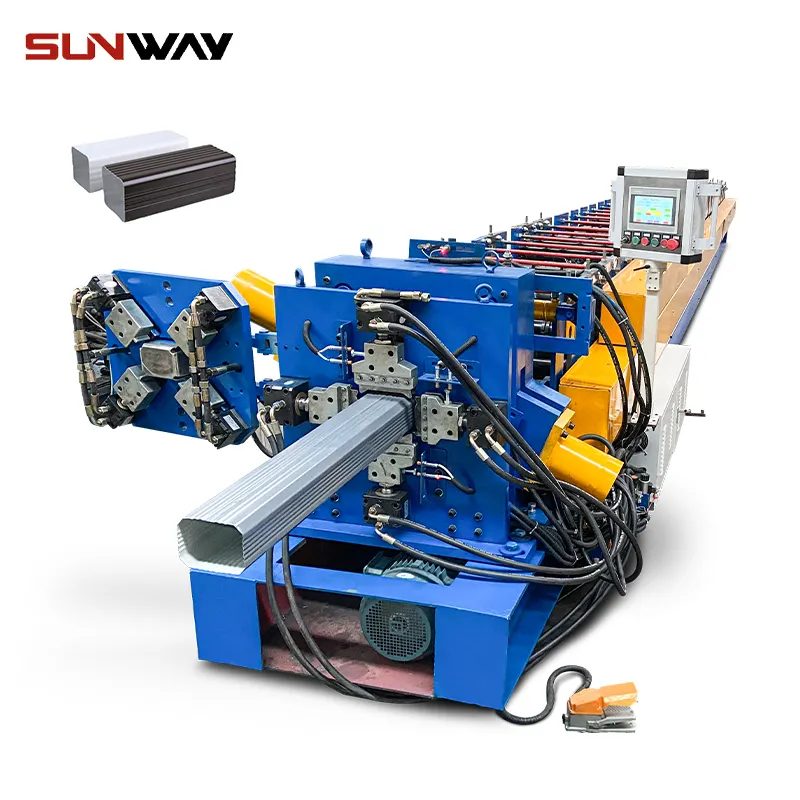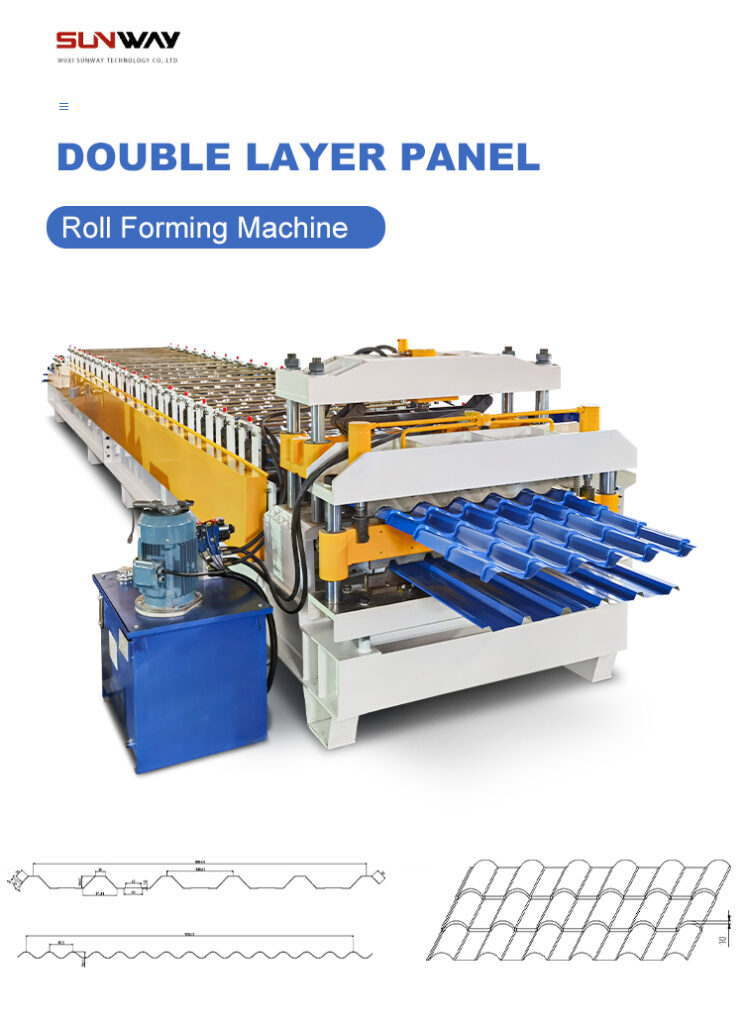परिचय
In the world of metal fabrication, efficiency and precision are paramount. Manufacturers and construction industries seek innovative solutions to produce metal profiles with consistency and cost-effectiveness. Angle iron roll forming machines have emerged as a game-changer in this domain, revolutionizing the way angle iron profiles are manufactured. This article delves into the workings of an angle iron roll forming machine, its applications, advantages, and how it has transformed metalworking processes.
Understanding Angle Iron Roll Forming Machine
Angle iron roll forming machines are specialized equipment designed to transform flat metal strips or coils into precise angle iron profiles. The machine operates through a continuous bending process, where the metal undergoes a series of roll forming stations to achieve the desired shape. The process ensures uniformity and accuracy, making it ideal for mass production of angle iron profiles.
The Working Principle of Angle Iron Roll Forming Machine
The working principle of an angle iron roll forming machine is based on sequential roll forming. The machine consists of a series of rollers, each designed to bend the metal gradually. The flat metal strip passes through these rollers, and with each station, it takes on the shape of the angle iron profile. The rollers are strategically positioned to perform specific bends, and the material progresses through the stations until the final shape is attained.

Key Components of Angle Iron Roll Forming Machine
To achieve efficient and precise roll forming, angle iron roll forming machines are equipped with several key components. These include:
- डेकोइलरThe decoiler holds the metal coil or strip, providing a continuous feed to the roll forming process.
- RolThe heart of the machine, these rollers are responsible for shaping the metal into the desired angle iron profile.
- Cutoff SystemThis system cuts the angle iron to the required length after forming, ensuring accurate and consistent pieces.
- नियंत्रण पैनलThe control panel allows operators to adjust settings, monitor the process, and ensure smooth operation.
Types of Angle Iron Roll Forming Machines
There are two primary types of angle iron roll forming machines:
Single-Station Angle Iron Roll Forming Machine
The single-station machine is suitable for manufacturing simple angle iron profiles with limited customization options. It is a cost-effective solution for smaller-scale production needs.
Multi-Station Angle Iron Roll Forming Machine
The multi-station machine is equipped with multiple roll forming stations, allowing for more complex and customized angle iron profiles. It is ideal for high-volume production and diverse profile requirements.
Advantages of Using Angle Iron Roll Forming Machine
Angle iron roll forming machines offer numerous advantages over traditional manufacturing methods:
- EfisiensiThe continuous roll forming process ensures high-speed production with minimal material waste.
- AccuracyThe precision of roll forming guarantees uniform and consistent angle iron profiles.
- प्रभावी लागतReduced material wastage and increased productivity lead to cost savings in the long run.
- VersatilityThe ability to create custom profiles makes it suitable for a wide range of applications.
Applications of Angle Iron Roll Forming Machine
Angle iron profiles find applications in various industries, including:
- ConstructionAngle irons are widely used for structural support in building frameworks.
- FurnitureThey serve as braces and supports in various furniture designs.
- 汽车工业Angle iron profiles are used in vehicle frames and chassis.
- Storage SystemsThey are employed in manufacturing shelving and storage racks.
- AppliancesAngle iron profiles are utilized in the assembly of appliances and machinery.

Choosing the Right Angle Iron Roll Forming Machine
Selecting the right angle iron roll forming machine is crucial for efficient production. Consider the following factors before making a decision:
सामग्री संगतता
Ensure that the machine is compatible with the types and thicknesses of metal you plan to use.
生产速度与效率
Assess the machine’s production speed and overall efficiency to meet your output requirements.
定制选项
If you need to produce custom angle iron profiles, opt for a machine with flexible customization capabilities.
Budget Considerations
Evaluate the machine’s cost against its features and long-term benefits to make an informed investment.
Maintenance and Care of Angle Iron Roll Forming Machine
To ensure optimal performance and longevity, regular maintenance is essential. Some maintenance tips include:
- स्नेहन: Lumasi bagian bergerak secara rutin untuk mengurangi gesekan dan keausan.
- InspectionsConduct routine inspections to identify any signs of wear or damage.
- CleaningKeep the machine clean and free from debris that could affect its operation.
提高效率和生产力的实用建议
以下是一些提升角铁辊压成型工艺效率和生产力的策略:
- 优化设置: 通过优化设置流程,将换型时间降至最低。
- 物料处理: 简化物料处理流程,以减少批次间停机时间。
- ऑपरेटर प्रशिक्षण: 为操作员提供全面培训,确保操作顺畅。
Safety Precautions When Operating the Machine
操作角铁辊压成型机时,安全至关重要。请确保遵守以下预防措施:
- प्रशिक्षण: 仅允许经过培训的人员操作机器。
- Perlengkapan Pelindung: 操作员必须佩戴适当的安全装备,包括手套和护目镜。
- 紧急停止: 机器应配备紧急停止按钮,以便在需要时立即关机。
- 安全护栏: 安装安全护栏,防止意外接触运动部件。
角铁辊压成型技术的未来
随着技术不断进步,角铁辊压成型机很可能将迎来进一步改进。这些改进可能包括:
- Automation: 更高的自动化水平,进一步提升生产效率。
- 材料创新: 采用新型材料,提升性能并实现可持续性。
- 智能控制: 集成智能控制和数据分析,实现更佳的工艺监控。

निष्कर्ष
角铁辊压成型机彻底改变了金属型材生产,为各行业提供速度、精度和成本效益。通过了解这些机器的工作原理和关键组件,制造商可以做出明智决策,选择最适合其生产需求的角铁辊压成型机类型。这些机器的优势包括效率、精度和多功能性,使其成为现代金属加工工艺中的宝贵资产。
常见问题解答
角铁辊压成型机的典型产量能力是多少?
角铁辊压成型机的产量能力因机器尺寸、速度和复杂性等因素而异。然而,这些机器每小时生产数百米角铁型材的情况并不罕见。
角铁辊压成型机能处理不同材料吗?
是的,角铁辊压成型机可处理钢、铝和其他金属等多种材料。通过调整设置和更换模具,即可实现对不同材料的兼容。
使用此机器能否创建定制角铁型材?
当然可以!现代角铁辊压成型机提供定制选项,允许制造商根据特定需求创建独特且量身定制的角铁型材。
机器应多久检查和维护一次?
定期检查和维护对于确保机器最佳性能和使用寿命至关重要。建议至少每月进行一次常规检查,并根据需要执行润滑和清洁等维护任务。
角铁辊压成型机对操作员友好吗?
是的,角铁辊压成型机设计用户友好,经过适当培训,操作员可快速熟练掌握操作。安全功能和清晰的控制面板有助于提升操作员体验。
